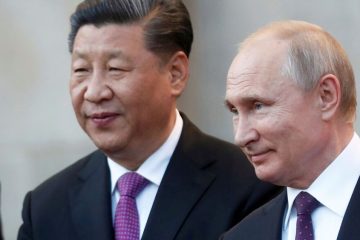Exactly what India did to become the most agile energy consumer in the world

In recent years, the world’s energy markets have experienced a great deal of volatility. India, which is experiencing unprecedented import demands on a tight budget, is practically relishing the experience, while large industrial economies are caught off guard.
The most populous nation in the world is settling into its major league debut with grace and poise, as seen by an agreement signed this month. It is still a long way from first in energy consumption, but it is developing rapidly.
In one of the biggest purchases ever for the super-chilled fuel, state-owned Petronet renewed a contract to purchase 7.5 million tons of LNG per year from Qatar beginning in 2028 for a duration of 20 years. In response to rising demand, India is eyeing more long-term LNG supply contracts.
The details of the deal’s price were not made public, but it arrives at a good moment because LNG prices have fallen significantly from their peak during Russia’s invasion of Ukraine in early 2022.
Argus Media reports that in 2023, the average price of LNG delivered to India was $13 per million British thermal units, nearly half of the $30 average price in 2022. According to Refinitiv, the price of natural gas in Asia is now hovering at $8.50.
In order to keep up with its rapidly growing energy demands, India has become an increasingly big buyer of energy on the global market, and this megadeal is just one more illustration of that. In response to geopolitical or economic uncertainty, it has proven adept at swiftly closing deals as prices fall.
Indian refiners and customers have benefited financially from the country’s aggressive acquisition of inexpensive oil from Russia, which has enraged many in the West. Prior to that, Iran, which was geographically close and also subject to sanctions, was a key supplier of crude to India.
According to Wood Mackenzie analyst Raghav Mathur, India made a wise decision by renewing its contract with Qatar at a time when prices are lower. This will lay the groundwork for future contracts.
Given the current state of air pollution, the lack of domestic oil and gas reserves, and the mounting international pressure to wean ourselves off coal, this nimbleness is more important than ever.
According to research out of the Energy Policy Institute at the University of Chicago, 60% of the rise in global air pollution from 2013 to 2021 was due to emissions in India. On the home front, pollution is a major issue as well. The air quality in New Delhi, the capital of India, is among the worst in the world, due in large part to the fuel mix used there.
However, being environmentally conscious can be quite costly for underdeveloped nations. According to Mathur, in order to hedge against the unpredictable fluctuations in energy prices, Indian purchasers have shifted their focus to long-term contracts.
India is becoming more adept at energy dealmaking, as evidenced by its concerted efforts to ensure long-term supply rather than reacting impulsively.
As it begins to industrialize its economy, upgrade its infrastructure, and stake its claim as an alternative to China’s factory floor, India must be nimble in its energy dealmaking. Its goal is to increase the proportion of natural gas in its energy mix from 6% by the end of 2023 to 15% by 2030.
About 45 percent of India’s natural gas comes from imports, making the nation the fourth biggest user of LNG globally, behind China, Japan, and South Korea. The demand for LNG from India might surpass 90 million metric tons per annum by 2050, up from slightly over 20 million in 2023, according to Wood Mackenzie. This means that it could rise to number three by the 2030s.
Since 85 percent of its crude oil comes from outside sources, the country is looking to generate electricity from natural gas or employ compressed natural gas to reduce its reliance on imported oil.
India is a price-sensitive client, despite its insatiable energy needs. Anu Agarwal, Asia head of liquefied petroleum gas at Argus Media, claims that India imported 26 million metric tons of LNG in 2020—the first year of the COVID-19 pandemic—when spot prices dropped to $2 per million British thermal units due to weak global demand.
As consumers in Europe and northeast Asia pulled back from the global market, India took in excess supply throughout the year. When prices skyrocketed in 2022, imports plummeted.
In 2022 and 2023, for example, this same opportunism was on show when the rest of the world turned its backs on Russia, a long-term ally of India’s. In 2023, Russia accounted for over 35% of India’s total crude imports, according to S&P Global Commodity Insights data.
India benefited from cheap coal when China prohibited it in late 2020. S&P reports that during the first three quarters of 2021, shipments from Australia to India increased by over 500%.
It is no easy task to strike a balance between affordable, sustainable, and secure energy. Elegantly balancing on the tightrope is the Indian elephant.






